🎨 6 UI Libraries For Building Better, Faster and Smarter Applications
The must-try UI Libraries that will bring your projects to life in half the time.
One of the best things about software development is seeing your thoughts and ideas come to life.
And part of building anything amazing is down to its design. Whether you’ve come up with a cool design yourself or someone else has, you’ll need to be able to turn that design into an interactive application.
Now, there was once a time when only those who had the best frontend dev skills could achieve such a process. If you didn’t know your flex-flow from your flex-wrap then the road to achieving the perfect user interface would be a long one.
However, nowadays everything has changed. The innovation of libraries such as React has completely changed not only the way things are designed but the way they are implemented in code.
We are now using components to break down user interfaces into smaller chunks that can be put together like a jigsaw puzzle. And the larger the puzzles grow, the more they turn into beautiful Design Systems of consistent yet customisable, and reusable assets.
What makes things even better is that many of these Design Systems or UI Libraries are free for anyone to use in their projects. These libraries are designed to help you build beautiful and professional-looking applications but in half the time.
Say goodbye to tedious CSS writing, and hello to easy-to-integrate pre-built components.
Let's dive in and explore the possibilities with these 6 UI Libraries for building better, faster and smarter applications:
#1 - Material UI (MUI)
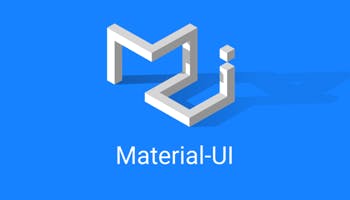
Material UI (MUI) is a UI library that can help you create professional and visually appealing interfaces in less time. MUI offers a wide range of components that can be used to build out a design system, or you can start with the pre-built components already included in the library.
One of the advantages of Material UI is that it is highly customisable. You can use the pre-built components as a starting point and modify them to fit your specific needs. This makes it possible to create unique designs without having to start from scratch.
MUI is also designed to be highly compatible with React, this means that if you are already familiar with React you can easily integrate MUI into your projects.
Overall, Material UI is a great option for anyone who wants to build high-quality interfaces quickly and efficiently. By leveraging the pre-built components and customising them as needed, you can create unique and visually appealing interfaces that meet the needs of your users.
#2 - Chakra UI

Chakra UI is a simple, modular, and accessible component library that provides everything you need to build your React applications. The library is designed to provide a set of building blocks that you can use to create clean and consistent user interfaces. It includes a wide range of components, such as buttons, forms, and navigation menus, that you can easily customise to fit your specific needs.
I have recently used Chakra UI in one of my latest projects, and it’s now become a favourite of mine!
One of the main advantages of Chakra UI is its accessibility. The library is built with accessibility in mind, and all components are designed to be fully accessible to all users, including those who use assistive technologies. This means that you can create applications that are usable by everyone, regardless of their abilities.
Another advantage of Chakra UI is its modularity. The library is built with a modular architecture, which means that you can easily add or remove components as needed. This makes it easy to create custom designs without having to write any CSS code.
Chakra UI also includes a powerful theming system that makes it easy to create custom themes for your applications. You can choose from a range of pre-built themes, or you can create your own using the library's built-in theming tools.
With its modular architecture, powerful theming system, and focus on accessibility, Chakra UI provides everything you need to create beautiful and functional user interfaces.
#3 - React-Bootstrap
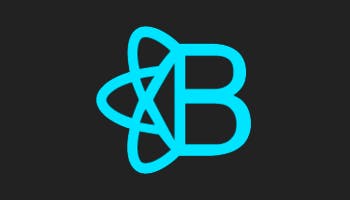
React-Bootstrap is a UI library that combines the CSS framework of Bootstrap with React components. This allows you to create responsive, mobile-first websites that meet user expectations in terms of functionality, reactiveness, and usability.
The library replaces any existing JavaScript with strictly React components, which means you no longer need jQuery or other dependencies to alter JavaScript elements. This creates a more seamless front-end development experience by cutting out the middleman and giving you more control over the appearance and function of the components in this model.
The React-Bootstrap framework retains the Bootstrap stylesheet at its core, making it compatible with many existing Bootstrap themes. This compatibility is imperative to maintaining a consistent appearance across your site or app, especially considering the huge number of websites built using Bootstrap.
React-Bootstrap is one of React's most well-established libraries, and the React and Bootstrap technologies have evolved together to create a reliable and solid starting point for UI development and design.
By utilising React-Bootstrap's components, you can create unique designs while maintaining consistency and efficiency.
#4 - Ant Design
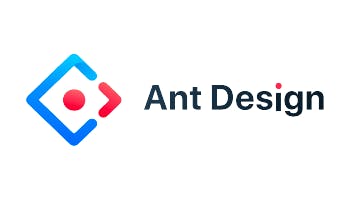
Ant Design is a popular UI component library that offers a wide range of design elements, including layouts, typography, navigation, data entry/forms, data visualisations, and more. One of the primary reasons developers choose Ant Design is its comprehensive and versatile component library, which makes it an excellent choice for enterprise products.
Design tokens allow organisations to customise the component library to meet their specific product requirements. Ant Design is well-maintained, with frequent updates and little to no reported bugs.
Ant Design is also compatible with Typescript and provides 100+ template projects for dashboards, reports, tables, admin UIs, chat, logins, and more. The library includes an extensive form library and excellent form handling, as well as an animation library (Ant Motion) that provides animations for common patterns and micro-interactions to complement its native and web component libraries.
Finally, Ant Design's internationalisation feature supports languages from around the world, with options for developers to add more.
#5 - Semantic UI
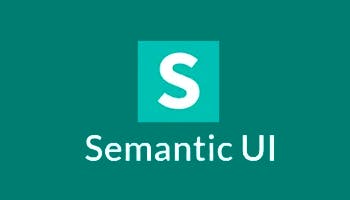
Semantic UI is a development framework that provides a simple and intuitive way to create beautiful and responsive layouts using human-friendly HTML.
One of the advantages of Semantic UI is its use of natural language-like syntax for class names, which makes it easier to understand and use for developers. The framework treats words and classes as interchangeable concepts, allowing you to create concise HTML code that is easy to read and modify.
Semantic UI also provides an intuitive way to add functionality to components using simple phrases called behaviours. This allows you to easily customise components without having to write complex JavaScript code.
Another advantage of Semantic UI is its simplified debugging process. The framework includes performance logging that allows you to track down bottlenecks in their code without having to dig through stack traces.
By using Semantic UI, you can create beautiful and professional-looking websites quickly and efficiently, without sacrificing functionality or ease of use.
#6 - Grommet
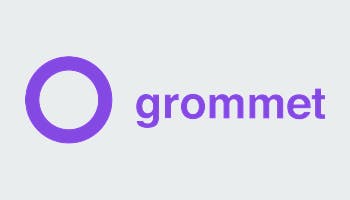
Grommet is a powerful development framework that simplifies the process of creating responsive and accessible mobile-first projects for the web. This easy-to-use, react-based component library is part design system and part development framework, providing developers with a tidy package that streamlines the way they develop apps.
One of the main advantages of Grommet is its modular architecture. You can mix and match components to build a library that fits your needs, using atomic design methods to tailor composite components. This makes it easy to create custom designs without having to write complex CSS or JavaScript code.
Another advantage of Grommet is its focus on accessibility. The framework includes a wide range of components that are designed to be fully accessible to all users, including those who use assistive technologies. This means that you can create applications that are usable by everyone, regardless of their abilities.
Grommet also includes a powerful theming system that makes it easy to create custom themes for your applications. You can choose from a range of pre-built themes, or you can create your own using the library's built-in theming tools. This makes it easy to create beautiful and functional user interfaces that fit your brand's unique style.
Grommet provides everything you need to create beautiful and functional user interfaces.
Honourable mention - Tailwind CSS
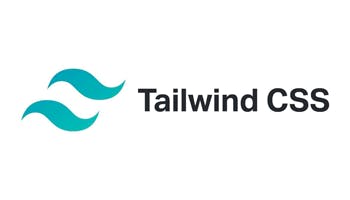
Although, not exactly a UI Library like the others above, I thought it was worth mentioning.
Tailwind CSS provides a set of pre-built utility classes that can be used to quickly style components without writing custom CSS. It's highly customisable and can be integrated with other UI libraries to create unique and professional-looking interfaces.
One of the major advantages of Tailwind is its low-level nature. This means that it never encourages you to design the same site twice, even if you're working with the same colour palette and sizing scale. With Tailwind, it's easy to build the same component with a completely different look in the next project.
Another advantage of Tailwind is its small size. It automatically removes all unused CSS when building for production, which means your final CSS bundle is the smallest it could possibly be. In fact, most Tailwind projects ship less than 10kB of CSS to the client.
Tailwind is a great choice for developers who want to work within a design system and create unique designs without having to write custom CSS. Its pre-built utility classes make it easy to be consistent and efficient, while its low-level nature allows for flexibility and creative freedom.
These six UI libraries offer a range of options for you to create beautiful and functional user interfaces in less time. By leveraging pre-built components and customising them as needed, you can create unique and visually appealing interfaces that meet the needs of your users.
Whether you're building a website or a mobile application, these libraries can streamline the development process and help you create a product that stands out from the crowd.
Now go build something beautiful 🌹
From your fellow ever-growing dev,
Cherlock Code
💙 If you liked this article...
I publish a weekly newsletter to a community of ever-growing developers, seeking to improve programming skills, increase productivity and share knowledge within the exciting sectors of Tech, AI and Web3.
Get more articles like this straight to your inbox.
And stay in touch on 🐦 @evergrowingdev